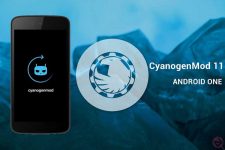
Learn more about the release of Nexus 5 and Android 4.4 KitKat here. Earlier today we already guided the users on how to flash the latest 4.4 KitKat factory image on your Nexus 4 and so we’re going to the same for the Nexus 7 (2012 and 2013 variants)
Without anymore halts, we’re going to head over to the Instructions. So hold on tight and make sure to follow everything to the point and finally enjoy what you’ve been seeking since quiet a long time.
Warning!
- Perform everything at your own risk, DroidViews or any of its community members shall not be held responsible for any damage to your device.
- Read and understand every instruction carefully before performing the same.
- This guide and its sole part is meant to be used only and only on the Nexus 7 and its respective variants. Do not attempt it on any other device.
Prerequisites
- Android Studio/SDK: Download
- USB Data Cable
- Backup your device’s storage, SMS, Contacts and other stuff (This will erase everything on your device)
Instructions for Nexus 7 2012 (Mobile)
- Download the factory image “nakasig” for the Nexus 7: Download
- Extract the contents of the downloaded file to the desktop. So now you have a new folder viz nakasig-krt16s holding all the required files.
- Power off the device. Press and hold on to the Volume down and power key altogether until you see the bootloader screen. This screen is what we know as bootloader mode or fastboot mode.
- Connect the device to the PC via USB cable
- Open the extracted folder where the files are present, press SHIFT key and right-click on any empty space inside the folder, now select Open Command Prompt Here.
- Type the following commands and execute them one-after-another to complete the manual wiping process:
fastboot erase boot
fastboot erase cache
fastboot erase recovery
fastboot erase system
fastboot erase userdata
- Flash the bootloader, type:
fastboot flash bootloader bootloader-tilapia-4.23.img
- Reboot the bootloader (This is necessary), type:
fastboot reboot-bootloader
- Flash the radio, type:
fastboot flash radio radio-tilapia-1231_0.18.0_0409.img
- Reboot the bootloader (This is necessary), type:
fastboot reboot-bootloader
- Flash the 4.4 Factory Image, type:
fastboot -w update image-nakasig-krt16s.zip
Instructions for Nexus 7 2012 (Wi-Fi)
Note: There is no new Radio image file within the factory image.
- Download the factory image “nakasi” for the Nexus 7: Download
- Extract the contents of the downloaded file to the desktop. So now you have a new folder viz nakasi-krt16s holding all the required files.
- Power off the device. Press and hold on to the Volume down and power key altogether until you see the bootloader screen. This screen is what we know as bootloader mode or fastboot mode.
- Connect the device to the PC via USB cable
- Open the extracted folder where the files are present, press SHIFT key and right-click on any empty space inside the folder, now select Open Command Prompt Here.
- Type the following commands and execute them one-after-another to complete the manual wiping process:
fastboot erase boot
fastboot erase cache
fastboot erase recovery
fastboot erase system
fastboot erase userdata
- Flash the bootloader, type:
fastboot flash bootloader bootloader-grouper-4.23.img
- Reboot the bootloader (This is necessary), type:
fastboot reboot-bootloader
- Flash the 4.4 Factory Image, type:
fastboot -w update image-nakasi-krt16s.zip
Instructions For Nexus 7 2013 (Mobile)
- Download the factory image “razorg” for the Nexus 7: Download
- Extract the contents of the downloaded file to the desktop. So now you have a new folder viz razorg-krt16s holding all the required files.
- Power off the device. Press and hold on to the Volume down and power key altogether until you see the bootloader screen. This screen is what we know as bootloader mode or fastboot mode.
- Connect the device to the PC via USB cable
- Open the extracted folder where the files are present, press SHIFT key and right-click on any empty space inside the folder, now select Open Command Prompt Here.
- Type the following commands and execute them one-after-another to complete the manual wiping process:
fastboot erase boot
fastboot erase cache
fastboot erase recovery
fastboot erase system
fastboot erase userdata
- Flash the bootloader, type:
fastboot flash bootloader bootloader-deb-flo-04.01.img
- Reboot the bootloader (This is necessary), type:
fastboot reboot-bootloader
- Flash the radio, type:
fastboot flash radio radio-deb-deb-G00_2.37.0_1024.img
- Reboot the bootloader (This is necessary), type:
fastboot reboot-bootloader
- Flash the 4.4 Factory Image, type:
fastboot -w update image-razorg-krt16s.zip
Instructions for Nexus 7 2013 (Wi-Fi)
Note: There is no new Radio image file within the factory image.
- Download the factory image “razor” for the Nexus 7: Download
- Extract the contents of the downloaded file to the desktop. So now you have a new folder viz razor-krt16s holding all the required files.
- Power off the device. Press and hold on to the Volume down and power key altogether until you see the bootloader screen. This screen is what we know as bootloader mode or fastboot mode.
- Connect the device to the PC via USB cable
- Open the extracted folder where the files are present, press SHIFT key and right-click on any empty space inside the folder, now select Open Command Prompt Here.
- Type the following commands and execute them one-after-another to complete the manual wiping process:
fastboot erase boot
fastboot erase cache
fastboot erase recovery
fastboot erase system
fastboot erase userdata
- Flash the bootloader, type:
fastboot flash bootloader bootloader-flo-flo-04.01.img
- Reboot the bootloader (This is necessary), type:
fastboot reboot-bootloader
- Flash the 4.4 Factory Image, type:
fastboot -w update image-razor-krt16o.zip
The flashing process might take some time, so kindly be patient and let it complete. Once it does, the device will reboot itself. It will be safe to remove the USB cable once you see the boot animation.
Root Nexus 7 on Android 4.4 KitKat
To Root your Nexus 7, you will need to unlock your bootloader and Install CWM recovery. To do so for Nexus 7 2012, follow this and for the Nexus 7 2013, follow this.
Well, most of us here would prefer this! Yes, to root your Nexus 7 running the latest, full-featured version of Android; KitKat 4.4. Its because of talented developers like Chainfire, that we’re able to take the pleasure of Root access on our Android devices, just in a few countable steps. Once you have successfully flashed the factory image, you can perform the further steps to gain root.
- Download the latest SuperSU flashable package: Download
- Connect your device to the PC via USB cable and transfer the UPDATE-SuperSU-vXXX.zip (here XXX resembles the latest version) to an apt location on your device’s storage
- Disconnect your device
- Power off. Now press Volume down and power button altogether until you see the bootloader screen. Use the volume (+ or -) keys to highlight Recovery Mode and select it using the power button. The device will boot itself into CWM recovery.
- Tap on Install zip from sdcard > choose zip from sdcard and select the UPDATE-SuperSU-vXXX.zip (here XXX resembles the latest version). Tap on Yes, when prompted to initiate the flashing process.
- Once done, tap on Reboot System Now to reboot your device.
Enjoy the taste of KitKat on your Nexus 7 along with Root access! Stay tuned! If you have the Nexus 10, the guide for the same is coming too.
More For You
Download Android KitKat 4.4 Apps For Your JellyBean Device
Got Your Nexus 5? Now Root, Unlock and Install TWRP Recovery on it! (Windows, Mac, Linux)



Brilliant tutorial. Short and simple. cheers!
Hi There,
When I try this, I receive an error saying “‘fastboot’ is not recognized as an internal or external command, operable program or batch file”. Do you have any idea what this means? I believe I installed the Android SDK in the past to get my Nexus 7 on 4.3. Perhaps it is an issue with drivers?
Also, in step 3:
“Power off the device. Press and hold on to the Volume down and power key altogether until you see the bootloader screen. This screen is what we know as bootloader mode or fastboot mode.”
I have ClockworkMod installed. Do I boot into ClockworkMod then choose something? Or do I simply have to be at that page where I can select ‘Start’, ‘Restart Bootloader’ or ‘Recovery Mode’?
Finally, the link for the 2012 Wifi downloads a .tgz file. When I unzip that, I get a .tar file. When I unzip that, I then get a folder with contents. Is this the correct process? The instructions simply state “Extract the contents of the downloaded file to the desktop. So now you have a new folder viz nakasi-krt16oholding all the required files.”. Perhaps this should be clarified a little to be more specific.
Thanks in advance 😀
Guess you got it already. Apologies for being late.
Everything seems right at your side but I’m kind of worried for the 2nd question of yours. I have the same .tgz file and once I extract that, I get a folder holding all the files, instead of what you stated. May be your download was left incomplete. The same happened to me too at the starting. So, I advice you to use another Download Manager (if any) or browser.
Thanks for the reply. Yes, I got it now. Extracting the contents as I wrote above did work, I just needed to extract a second time for some reason. Anyway, it’s OK now. It was probably something strange at my end. Regards.
Glad it worked 🙂 Good luck further